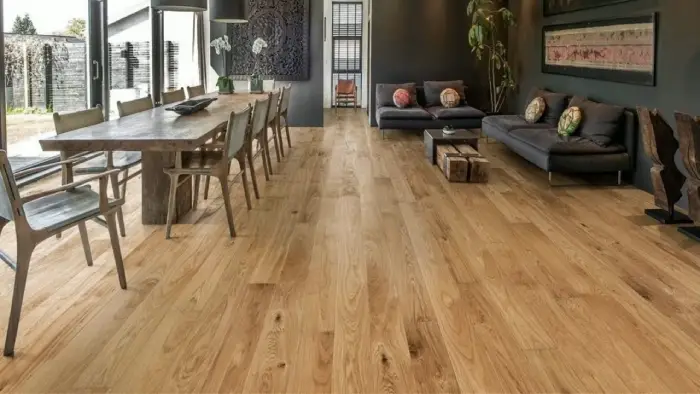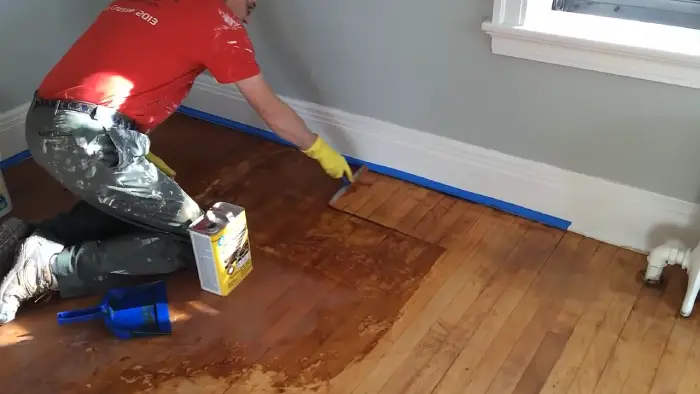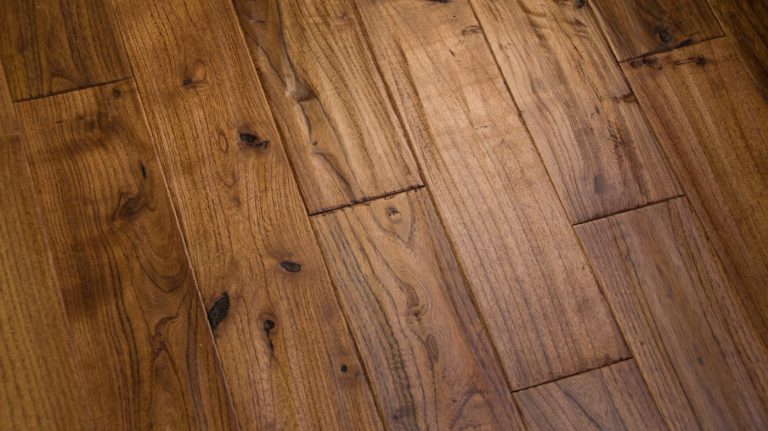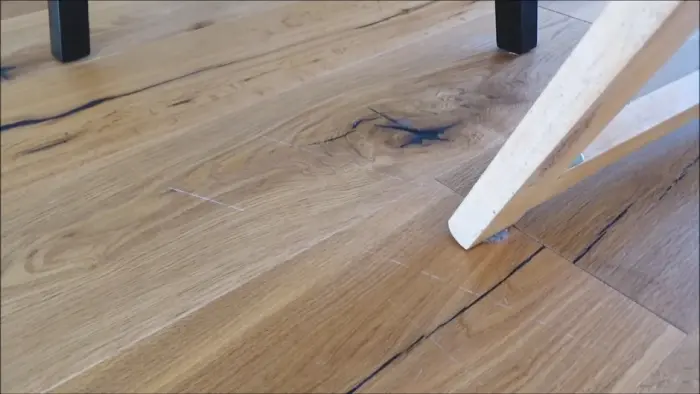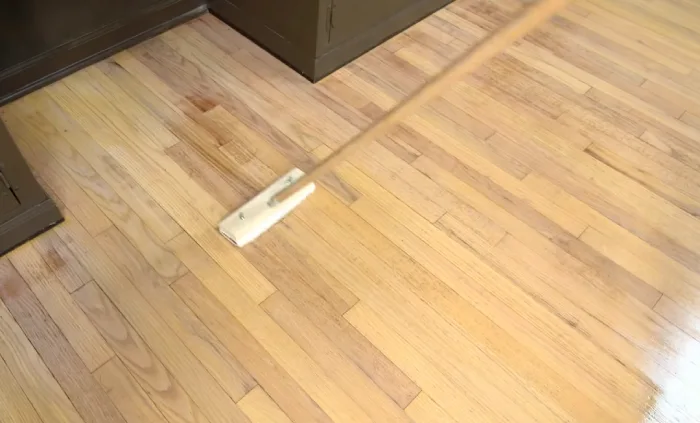Does Engineered Wood Have Formaldehyde: 5 Ways to Find Out
You may be considering engineered wood for your next flooring project, but you’ve heard concerns about formaldehyde emissions. So, what’s the truth? Does engineered wood have formaldehyde?
Formaldehyde can be present in the plywood core and adhesives used in some engineered wood flooring manufacturing. But, not all products pose a concern.
To ensure safety, the CARB2 standard sets limits on formaldehyde emissions. Compliance with this standard ensures that engineered wood flooring meets the required formaldehyde emission standards and is considered safe.
We’ll explore how you can tell if your flooring contains high levels of formaldehyde and what the health effects are.
How to Tell if Flooring Contains High Formaldehyde?
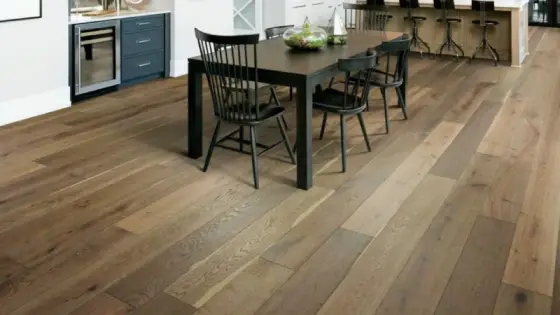
When checking if flooring contains high formaldehyde, you should start with:
- 1. Check for Certifications
- 2. Research Manufacturer Information
- 3. Request Formaldehyde Emission Information
- 4. Seek Independent Testing Reports
- 5. Trustworthy Reviews and Recommendations
Let’s look at the facts.
1. Check for Certifications
To ensure that you’re choosing safe flooring for your home, it’s important to check for certifications such as CARB2, GREENGUARD Gold, and FloorScore.
These certifications confirm that the engineered wood flooring you’re considering has undergone testing for formaldehyde emissions and meets strict standards for low levels.
CARB2 compliance ensures that the flooring meets the formaldehyde emissions standards set by the California Air Resources Board. GREENGUARD Gold certification confirms that the flooring has been tested for thousands of chemicals and meets strict emissions standards for indoor air quality.
Finally, FloorScore certification verifies that the flooring meets strict indoor air quality standards set by the Resilient Floor Covering Institute.
By checking for these certifications, you can be confident that the engineered wood flooring you choose is safe and healthy for your home.
2. Research Manufacturer Information
Finding safe flooring for your home requires researching the manufacturer’s reputation and commitment to safety and compliance.
Reputable manufacturers often provide information about their adherence to formaldehyde emission standards and their manufacturing processes.
Formaldehyde is a colorless gas that goes into engineered wood products. It is a known carcinogen and can cause respiratory problems, especially in people with asthma or other respiratory conditions.
To ensure that the engineered wood you are considering is safe, it is important to research the manufacturer’s information. Look for companies that have a good reputation for producing high-quality, safe products.
Check if they have any certifications or accreditations from recognized organizations that ensure their products meet safety and environmental standards.
The table below provides a list of some of the certifications and accreditations that you should look for when researching a manufacturer’s information.
| Certification/Accreditation | Description |
| CARB Phase 2 | California Air Resources Board (CARB) Phase 2 is a standard for formaldehyde emissions in composite wood products. |
| FSC | Forest Stewardship Council (FSC) certification ensures that the wood used in the product comes from responsibly managed forests. |
| SCS Global Services | SCS Global Services is an independent third-party certification body that verifies compliance with environmental and sustainability standards. |
| Greenguard Gold | Greenguard Gold certification ensures that the product has low chemical emissions, which can improve indoor air quality. |
By researching the manufacturer’s information and looking for these certifications and accreditations, you can ensure that the engineered wood you choose for your home is safe and meets environmental standards.
3. Request Formaldehyde Emission Information
Acquiring specific information regarding formaldehyde emissions in their products is crucial, so contacting the flooring manufacturer or supplier is recommended.
The manufacturer or supplier may provide documentation, such as a hazardous material safety sheet (MSDS), that outlines formaldehyde levels.
It’s important to request this information before purchasing or installing engineered wood flooring to ensure that it meets formaldehyde emission standards and doesn’t pose a health risk to you or your family.
When contacting the manufacturer or supplier, be specific about what information you’re requesting. Ask for documentation that outlines formaldehyde levels and emission standards for their products.
If the manufacturer or supplier can’t provide this information, it may be best to look for another supplier who can. It’s always better to be safe than sorry, and by requesting formaldehyde emission information, you can ensure that you’re making an informed decision about the safety of your home.
4. Seek Independent Testing Reports
You can gain insight into the formaldehyde emissions of specific flooring products by seeking independent testing reports from trusted sources.
These reports can help you determine the formaldehyde levels of the engineered wood flooring you’re considering, which is essential for ensuring the safety and health of your family and the environment.
Independent testing laboratories can perform formaldehyde emission tests on specific flooring products and provide you with a comprehensive report of their findings.
These reports will give you an idea of the level of formaldehyde emissions of the engineered wood flooring you’re considering and compare it to industry standards.
By seeking these reports from trusted sources, you can make an informed decision about which flooring option is best for your home and family, ensuring that your indoor air quality is safe and healthy.
5. Trustworthy Reviews and Recommendations
If you’re looking for reliable information on formaldehyde emissions in flooring products, turn to trusted sources such as reputable reviews and professional recommendations.
These sources can help you identify which engineered wood products are safe and which ones contain formaldehyde.
Flooring experts and environmental consultants have the necessary knowledge and experience to evaluate the toxicity levels of flooring products and can provide you with recommendations based on your needs and preferences.
Reviews from reputable sources are also a great way to gauge the performance and quality of engineered wood products.
They can provide insights on how well a product holds up over time, how easy it is to install, and how it compares to other products on the market.
What Are the Health Effects of Formaldehyde Exposure in Engineered Wood Flooring?

If you’ve been exposed to formaldehyde in engineered wood flooring, you may experience various health effects. These can include respiratory symptoms, such as coughing and wheezing, and allergic reactions, like skin irritation and hives.
Long-term exposure can lead to respiratory disorders, such as asthma, eye, nose, and throat irritation, as well as headaches and fatigue. It’s important to be aware of these potential health effects and minimize your exposure to formaldehyde.
1. Respiratory Symptoms
Exposure to formaldehyde in engineered wood can cause respiratory symptoms like coughing, wheezing, and throat irritation.
So, it’s important to ensure proper ventilation in areas where it’s installed. Formaldehyde is commonly used in the production of engineered wood as a binding agent, and it can emit harmful gases over time.
These gases are known as volatile organic compounds (VOCs) and can cause a range of respiratory symptoms.
Studies have shown that prolonged exposure to formaldehyde can cause asthma and bronchitis.
It’s important to note that the severity of the symptoms can vary based on the level of exposure and the individual’s sensitivity to the chemical.
To protect yourself and others from these harmful effects, it’s essential to ensure proper ventilation in areas where engineered wood is installed and to choose low-VOC options when possible.
2. Allergic Reactions
Particularly sensitive individuals may experience allergic reactions to formaldehyde, such as skin rashes, itching, watery eyes, and nasal congestion, which can be alarming and uncomfortable.
Formaldehyde is commonly found in many household items, including engineered wood products. These products contain adhesives that contain formaldehyde, which can accumulate in the air and cause allergic reactions in sensitive individuals.
The severity of the allergic reaction can vary depending on the individual’s sensitivity and the level of formaldehyde exposure. In some cases, the allergic reaction can be severe enough to require medical attention.
It’s important to note that not everyone exposed to formaldehyde will experience allergic reactions.
Still, those who are sensitive should take precautions to reduce their exposure, such as choosing low-formaldehyde-engineered wood products or improving ventilation in their homes.
3. Respiratory Disorders
You may develop respiratory disorders like asthma and bronchitis from prolonged exposure to high levels of formaldehyde, which can be found in many household products, including certain types of engineered wood.
This chemical is commonly used in the manufacturing process as a binding agent, and it can be released into the air over time, especially in poorly ventilated spaces.
To protect yourself from the harmful effects of formaldehyde, it’s important to be aware of the potential risks associated with its exposure. Here are some key points to keep in mind:
- Formaldehyde can irritate the eyes, nose, and throat, causing symptoms like coughing, sneezing, and sore throat.
- Prolonged exposure to formaldehyde can lead to more serious respiratory problems, including asthma and bronchitis.
- The risk of developing these conditions increases with the concentration and duration of exposure.
- People with pre-existing respiratory conditions may be especially vulnerable to the effects of formaldehyde.
To reduce your exposure, choose products that are labeled as low-emitting or formaldehyde-free, and make sure that your living space is well-ventilated.
4. Eye, Nose, and Throat Irritation
If you’re concerned about the potential health effects of engineered wood, you may wonder if it contains formaldehyde.
When you breathe in formaldehyde, it can irritate your eyes, resulting in redness, tearing, and itching. It can also cause nasal congestion and a sore throat. These symptoms can be particularly challenging for people with allergies or other respiratory conditions.
While not every type of engineered wood contains formaldehyde, it’s important to be aware of this possibility if you’re considering using it in your home or workplace.
If you’re concerned about formaldehyde exposure, be sure to look for low-emitting or formaldehyde-free products.
5. Headaches and Fatigue
Feeling tired and getting headaches can really put a damper on your day, especially if you spend a lot of time around certain materials. Formaldehyde is a material known to cause headaches and fatigue in individuals exposed to high levels.
Engineered wood products, made from wood chips or fibers glued together with formaldehyde-based resins, can release formaldehyde gas into the air.
This gas can be inhaled, causing irritation to the eyes, nose, and throat, as well as more serious symptoms such as headaches and fatigue.
The amount of formaldehyde released from engineered wood products varies depending on the specific product and the conditions it is used in. However, there are steps you can take to reduce your exposure to formaldehyde.
Choosing low-emitting products, using proper ventilation, and maintaining a comfortable temperature and humidity level in your home or workplace can all help to minimize formaldehyde exposure.
If you’re experiencing headaches or fatigue around certain materials, it’s important to seek medical attention and determine the source of the issue.
6. Potential Carcinogenic Effects
Exposure to formaldehyde can increase the risk of certain cancers, such as nasopharyngeal cancer and leukemia, according to the International Agency for Research on Cancer.
Formaldehyde is commonly found in engineered wood products, such as plywood, particle board, and fiberboard, as it’s used as a binding agent.
Formaldehyde can also be released into the air from these products through an off-gassing process, which can occur for years after installation.
Inhaling formaldehyde can have potential carcinogenic effects, especially in individuals with prolonged and high levels of exposure.
Formaldehyde can cause DNA damage and disrupt cellular processes, leading to cancer development.
Limiting exposure to formaldehyde by using products with low formaldehyde emissions, properly ventilating living spaces, and avoiding smoking indoors is important.
Regular testing for formaldehyde levels in indoor air can also help prevent potential health risks.
At what level of formaldehyde in engineered wood is considered safe?

You’ll want to ensure that the engineered wood flooring you choose meets or exceeds the CARB2 standard to ensure safe levels of formaldehyde emissions.
The CARB2 standard sets a threshold of around 0.05 PPM for formaldehyde emissions from the composite core and veneer core hardwood plywood used in engineered wood products.
This threshold is considered safe and helps to ensure healthier indoor air quality, minimizing the potential health risks associated with high formaldehyde levels.
It’s important to note that formaldehyde emissions can vary depending on the specific product and manufacturer. Some products may meet or exceed the CARB2 standard, while others may not.
Therefore, it’s crucial to research and choose a reputable manufacturer and product that meets the CARB2 standard to ensure that your indoor air quality is as safe as possible.
Can formaldehyde emissions from engineered wood decrease over time?
Formaldehyde emissions from engineered wood flooring can indeed decrease over time. This is because the initial off-gassing that occurs after installation subsides over a period of time.
However, to minimize exposure, it is recommended to perform proper ventilation and allow the flooring to “gas off” in a well-ventilated area before installation.
This simple step can go a long way in ensuring that the formaldehyde emissions are minimal and pose no significant harm to the room’s inhabitants.
Finding Low-Formaldehyde Engineered Wood Flooring for a Healthy Home
Now that you’ve learned about formaldehyde emissions in engineered wood flooring, it’s time to make an informed decision about your home’s flooring.
Remember, CARB2 certification is crucial in ensuring that your flooring meets the safety standards set by the government.
If you want to verify that your flooring contains low formaldehyde levels, you can purchase a formaldehyde test kit or ask your flooring manufacturer for their results.
While formaldehyde exposure in engineered wood flooring can cause health effects, it’s important to note that the level of formaldehyde in your flooring is what matters.
Safe levels of formaldehyde emissions are present in most engineered wood flooring, but it’s always best to err on the side of caution.

